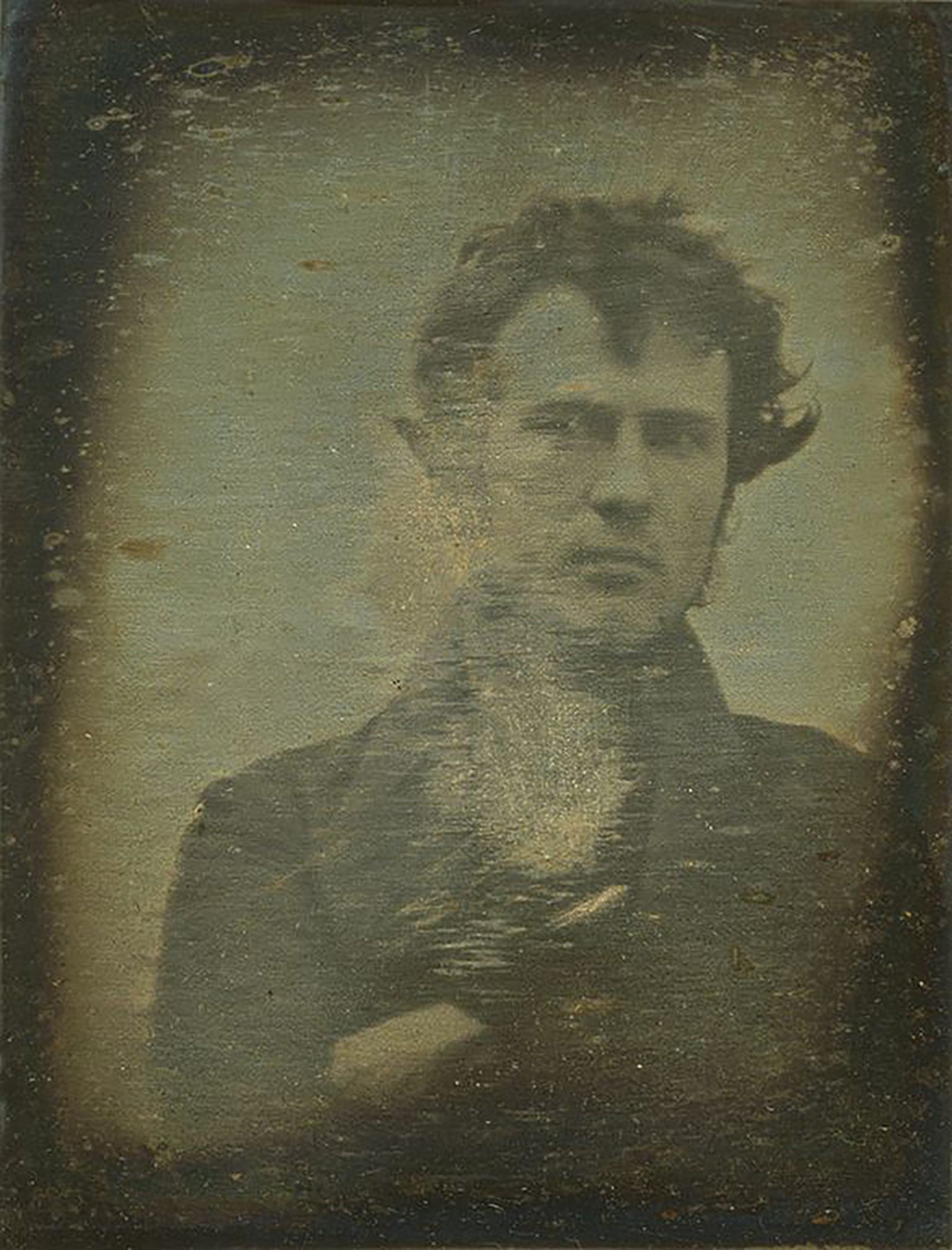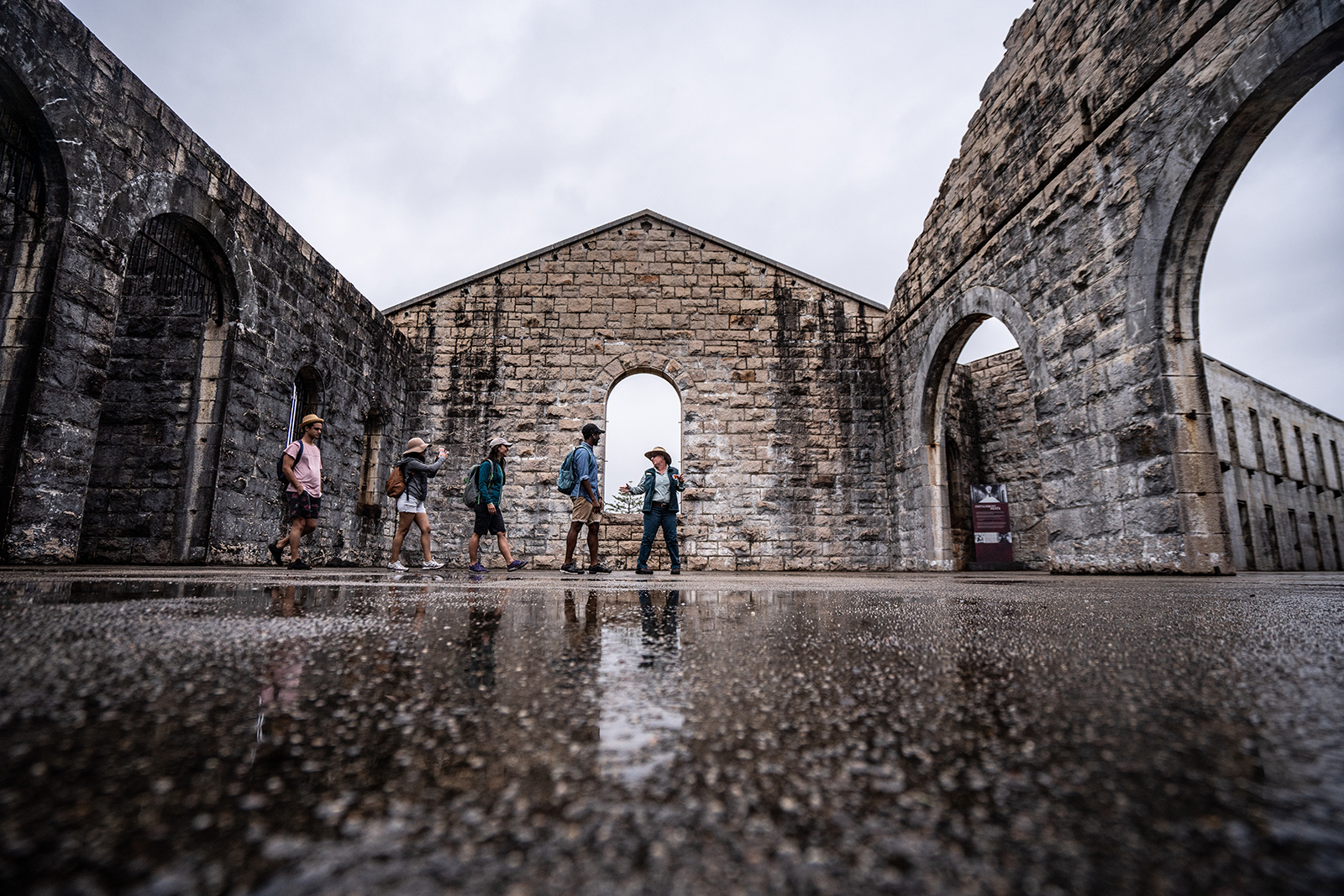Did you know that selfies pre-date social media? The first one was back in 1839 when a bloke named Robert Cornelius took a self portrait using a daguerreotype camera. Needless to say, he was pretty chuffed. Fast forward to today and the idea of pointing a camera at yourself might seem pretty normal, but the first recorded use of the term was only in 2002. And how’s this for a claim to fame? The term ‘selfie’ was coined by an Aussie.

Robert Cornelius, the first selfie. Source: Public Domain
Public Domain
Social media and smartphones have led to an explosion in selfies. But in the hunt for the best selfie (or #candid photo) there’ve been some pretty shocking incidents. Wikipedia even has a list of selfie-related injuries and deaths. Be warned, it’s grim reading.
So how can you look after yourself when taking a selfie? Here’s how to #checkyoselfie to stay safe on your photo shoot and go about it in an eco-friendly way so that you can be proud of your snaps.
-
Don’t Die for the Gram
 Photo Information
Photo InformationA collage of selfie articles in news headlines
DPIE
It might seem obvious, but the selfie deaths and injuries list says otherwise. Framing a shot gives you tunnel vision that can make routine situations dangerous. Even if you’re just the subject of a shot, you might be more risky or get distracted while focusing on the camera. You might think you’re in a totally safe place when you’re taking or posing for a photo, make sure you snap out of photo-mode and pay attention to what you’re doing if you’ve got to move.
Falling For You
via Giphy @dontmix
Falling off a cliff is a common selfie death. It only takes a small trip or an unexpected gust of wind to go sailing over the edge, so complete awareness is essential. Stay well away from the edge (remember that if you trip you could end up a lot closer) and stay totally focused near cliff edges. The photo’s never worth the risk.
Water ‘bout the ocean? Rock platforms with unpredictable waves, changing tides, rough beaches, slippery waterfalls and wild water holes are all drowning and falling risks. Slipping and rolling an ankle can be an ordeal if you’re far from help. Keep your eyes peeled in these danger zones and check the conditions before you go.
National parks and natural locations are inherently risky and dangerous places because they are unpredictable and unfamiliar. Do some basic research on the place you’re going, check for park alerts and the weather forecast. A little bit of prep goes a long way.
Barriers Are For The People
Jumping a fence for a photo doesn’t make you look edgy, it just makes you look like a fool. National parks puts barriers in to keep people off unstable terrain, trying to keep us safe (as best they can) not because they’re trying to be the fun police. Do you really want to look like you trashed the place or risked getting it closed for your photo?
Two Hands on the Wheel
 Photo Information
Photo InformationSafety first
Border Ranges National Park
Branden Bodman/DPIE (2018)
It’s relaxing to pull off the highway onto a dirt entry track to a national park – you’re nearly there! But just because the roads are a bit quieter doesn’t mean it’s time to start your Instagram story. You need your wits about you to negotiate low traction and visibility, oncoming traffic, wildlife, hikers and bike riders – leave the #content to your buddies and focus on getting the crew there safely.
Did you know? Falls, drowning and transport are the most common causes of selfie deaths worldwide.
-
How To Take A Selfie You’re Proud Of
 Photo Information
Photo InformationLook after your selfie, protect your selfie
Jack Perkins walking track
Hat Head National Park
Rob Mulally/DPIE
You might survive some risky business on your crusade for some fresh shots – but will they be worth it if you just come off as selfish? A bunch of behaviour has quickly become taboo on social media, and some of it’s also illegal – is it worth risking a fine for a selfie that just makes you look irresponsible?
The Wildlife Is On A Social Media Detox
via GIPHY: ?@cartoon_network_emea
It might seem cool to get a selfie with a native Aussie animal, but the intrusion into their natural way of life is often pretty bad for them. National parks are all about seeing (and photographing) native animals in their natural habitat, doing their natural thing. If a kangaroo or wombat is getting too friendly, it’s actually a cause for concern.
While we’re on the topic, did you know that rock stacking (aka rock cairns) is bad for wildlife? Many native species live under rocks scattered throughout the environment, and moving them unnaturally can really limit their habitat.
Don’t Feed It! Taking photos of wild animals up close can be just as dangerous as trying to feed them. Read why.
Celebrate Nature In Its Natural State
View this post on Instagram
The best thing about national parks is how they give us a glimpse of what nature’s like without human interference, and you can celebrate this with your photos!Instead of shots of fires, picked flowers, rock cairns and off-track trails, try and capture the beauty of untouched nature. You’ll be an advocate for conservation and you can be sure that you won’t end up on a call-out Instagram like @publiclandshateyou.
A thousand people thinking ‘I’ll tread lightly’ quickly adds up. Read our tips on how to leave no trace to learn how to dial down your impact on our wild places.
Don’t Be Afraid To Call Out Bad Behaviour
? via GIPHY @equalpartsstudio
If you see unsafe or irresponsible behaviour on your socials you can do something. Shoot the poster a friendly DM explaining why their post might not be ok. Maybe others will follow and risk their lives because they’ve underestimated the dangers, or perhaps the post simply doesn’t need an exact geotag that’ll result in more traffic than an area can take. Sometimes people are just unaware of how much damage to nature they can cause.
You might not always get a positive response but if all of us nature lovers band together and take a stand we can change the way people think about their interactions with the outdoors.
Keep It Original
 Photo Information
Photo Information#original. Look at those reflections.
Trial Bay Gaol
Arakoon National Park
Rob Mulally/DPIE
Do you really need to ‘prove’ that you went to the Three Sisters? Why not inspire your mates with a fresh take on a well-known walk. You won’t have to go off-track or anything, once you open your eyes, the selfie possibilities are endless. Get artistic.
Tips To Make Your Photos More Unique
 Photo Information
Photo InformationIts all the lil’ things. Think macro!
Werrikimbe National Park
Rob Mulally/DPIE (2019)
With these tips and a bit of practice you’ll be capturing intriguing shots that your mates won’t be able to get enough of. Give these a crack:
- Break free of the selfie – I know, controversial, but the style has been around for a while. Get your mates on camera duty while you enjoy the view! Even better, try to be ‘doing’ something in the photo – beats a pose any day.
- Buy a tripod – Tripods help keep your camera (or phone) stable for crisp landscape shots, low light and even time lapses. They’re also great for group photos or getting a few shots of yourself on solo missions.
- Get macro – It can be hard to capture the majesty of a lookout on your phone, but macro never fails to be epic. Get up close to the flowers, strange rocks and interesting patterns in the trunk of the trees you pass, there’s a whole new world right at your feet!
- Think about angles – The lines in a photo are everything. The angle of the cliffs, trees, rivers and rays lead people’s eyes around your photo. Try changing it up and taking a new perspective, you might find a totally fresh take on a place that’s been photographed a thousand times.
- Don’t let the weather stop you – Cloudy weather or rain doesn’t mean your shots are ruined. Mist, rolling clouds, soft light through the canopy and epic sunsets are just some of the benefits or wild weather. You can’t capture it unless you’re out there!
Header video: via Giphy @ethanbarnowsky











